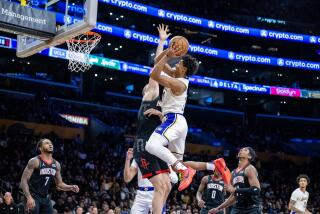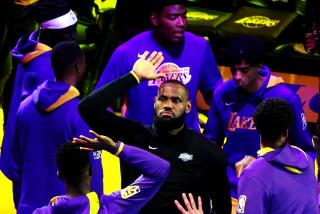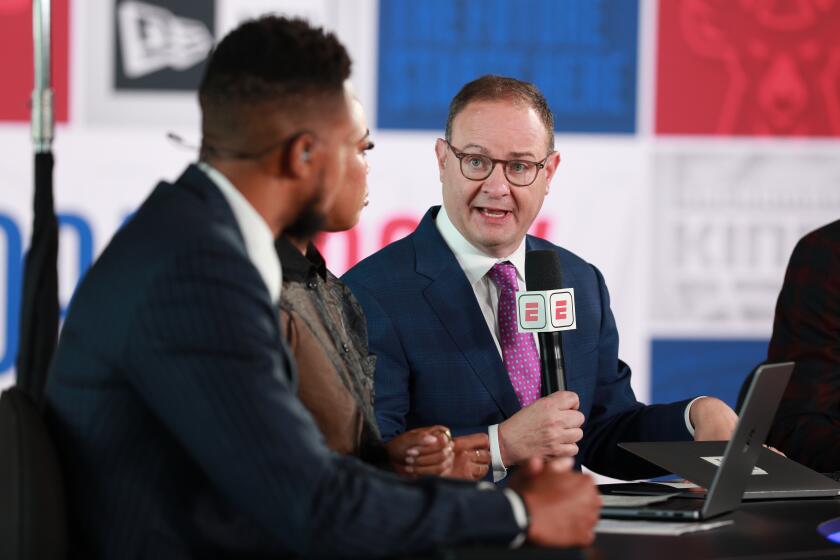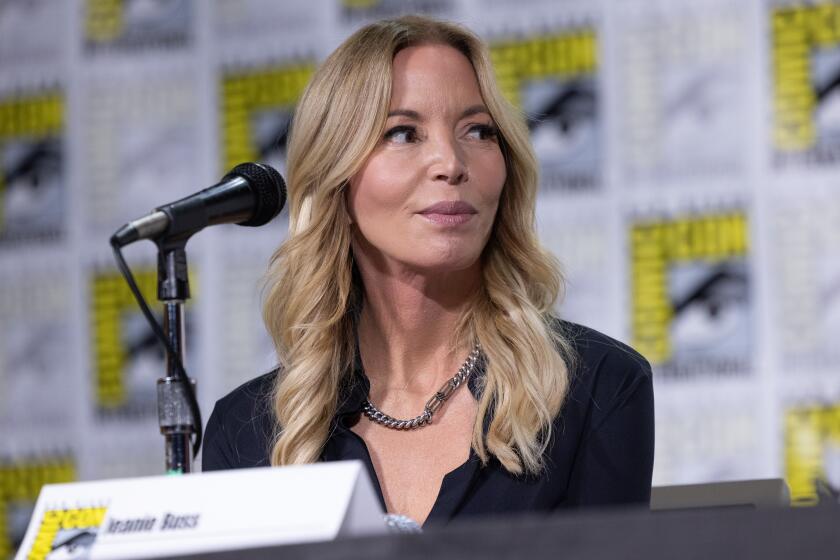Five things Lakers need from their bench
The Lakers are patiently working the count, hoping they can belt another ball out of the park.
As they’re continuosuly hitting foul balls regarding the Dwight Howard negotations, there’s a less glamorous element that will determine how much the Lakers’ front office builds off the Steve Nash signing.
That entails upgrading their bench, which Lakers General Manager Mitch Kupchak believes is its biggest need. Doing so may be the equivalent of hitting a bunch of singles, but they would be just as important in hitting another home run.
The reserves last season finished last in the league in points (30.5), 20th in shooting percentage (21.8%) and 28th in efficiency (27.2). The bench’s success or lack thereof will largely determine whether the Lakers’ veteran-laden starting lineup will receive enough rest before the postseason. The identity will significantly decide whether Mike Brown has to endlessly shuffle his rotation or quickly settle in on a lineup.
The Lakers are pretty limited on how they go about doing that. The Times’ Mike Bresnahan reported the Lakers hope to use only the veteran’s minimum even though they have a mini mid-level exception worth $3 million. Signing Nash to a three-year, $27-million deal frankly ate too much into their payroll at a time the Lakers are trying to trim to accomodate the new labor deal.
But here are a few areas that the Lakers could use even if they have limited assets.
1. Energy. The Lakers don’t need reserves fixated on minutes. They need players who will just stay in their lane and provide hustle points. That’s why the Lakers have said they want to re-sign Jordan Hill, who posted a surprising 4.7 points and 4.4 rebounds after he was acquired from Houston. Devin Ebanks’ agent, David Bauman, said the Lakers agreed to a one-year deal worth a little more than $1 million because they liked how the second-year forward fit in during surprise promotions during Kobe Bryant’s shin injury and Metta World Peace’s seven-game suspension. Even though Matt Barnes provided this quality the past two seasons, the Lakers aren’t expected to keep him because his various injuries prevented him from providing consistency in the postseason.
Because the Lakers’ starting lineup features plenty of All-Star caliber talent, the Lakers need players who will scrap for hustle points and show effort on defense. Plays won’t be called for them, so it probably will be the only way to distinguish themselves on the team. That’s probably why rookies Darius Johnson-Odom and Robert Sacre have described themselves as hard workers.
2. Outside shooting. Nash’s arrivel significantly addresses this problem because he has shot 42% from three-point range in his 16-year career. But the Lakers can’t solely rely on that. Nash will assume primary ballhandling duties and it’d be unrealistic for him to take the volume of shots he did with Phoenix. The Lakers need more options if they are to improve their 32.6% clip from three-point range in the 2011-12 season, which ranked 25th in the league. The most obvious candidates are backup point guard Steve Blake and Andrew Goudelock.
Blake hit a flurry of key outside shots that cemented Games 1, 3 and 7 in the first-round series against the Denver Nuggets. But his 33.5% clip from downtown during the regular season fell short of the Lakers hope in him being to Bryant the same way Steve Kerr and John Paxson were to Michael Jordan. Meanwhile, Goudelock’s 37.3% mark from three-point range earned him a spot in the rotation. But that spoke more to the Lakers’ glaring weakness in that area. His vast area of floaters, spot-up jumpers and three-point shots still only amounted to a 39.1% mark from the field.
The Lakers need to improve these numbers because it would make it easier for Brown to crossmatch his reserves with the starters. Bryant, Bynum and Gasol wouldn’t receive as many double teams. And the reserves’ ability to hit outside shots would maximize their chance to contribute on offense.
3. Athleticism. Relative to the rest of the league, the Lakers are known as old and slow. If the Lakers showed more consistency on the bench, it wouldn’t be seen that way. Forward Josh McRoberts runs at a sprinters’ pace. Steve Blake and Darius Morris know how to push the pace. Ebanks can operate on the wings at a decent speed.
The Lakers’ starting lineup won’t be able to generate many points off transition. So it’s critical the Lakers’ reserves offer such a luxury both to throw defenses off and to fill a need the other unit lacks.
4. Consistent rotation. Brown worked with less than ideal circumstances. As a first-year coach, he lacked a full training camp. So it’s understandable that Brown constantly shuffled his rotation in hopes of finding a pleasant surprise. Though that approach worked with Hill, the array of bench combinations played a large part in the unit’s inconsistency.
Even if the Lakers can’t drastically upgrade their bench, it’d be better served if Brown shuffled lineups only during training camp. Once the season starts, Brown should stay with a rotation and maximize the strenghts that combination presents.
5. Sustain leads. It’s too much to ask the Lakers’ bench to replicate what the starters provide considering the strong talent disparity. But it’s critical they consistently maintain leads so Brown has no reason to put his starters back in the game. It may not seem like a big deal if the Lakers win anyway. But such an approach could catch up to the Lakers’ fatigue level once the playoffs start.
E-mail the Lakers blog at mgmedin@gmail.com. Follow the Lakers blog on Twitter.
More to Read
All things Lakers, all the time.
Get all the Lakers news you need in Dan Woike's weekly newsletter.
You may occasionally receive promotional content from the Los Angeles Times.







